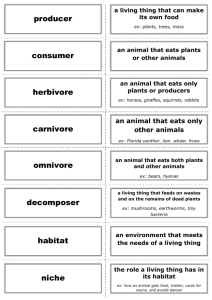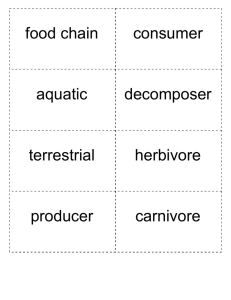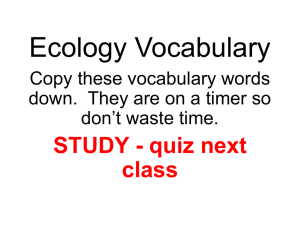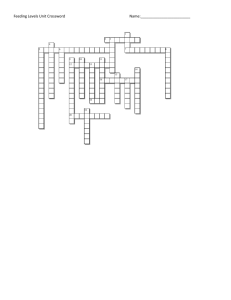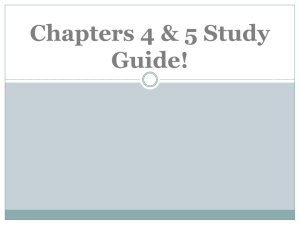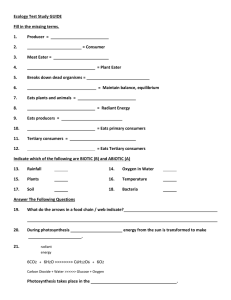Vocabulary for Food Chain/Webs The arrow indicates the FLOW OF
advertisement
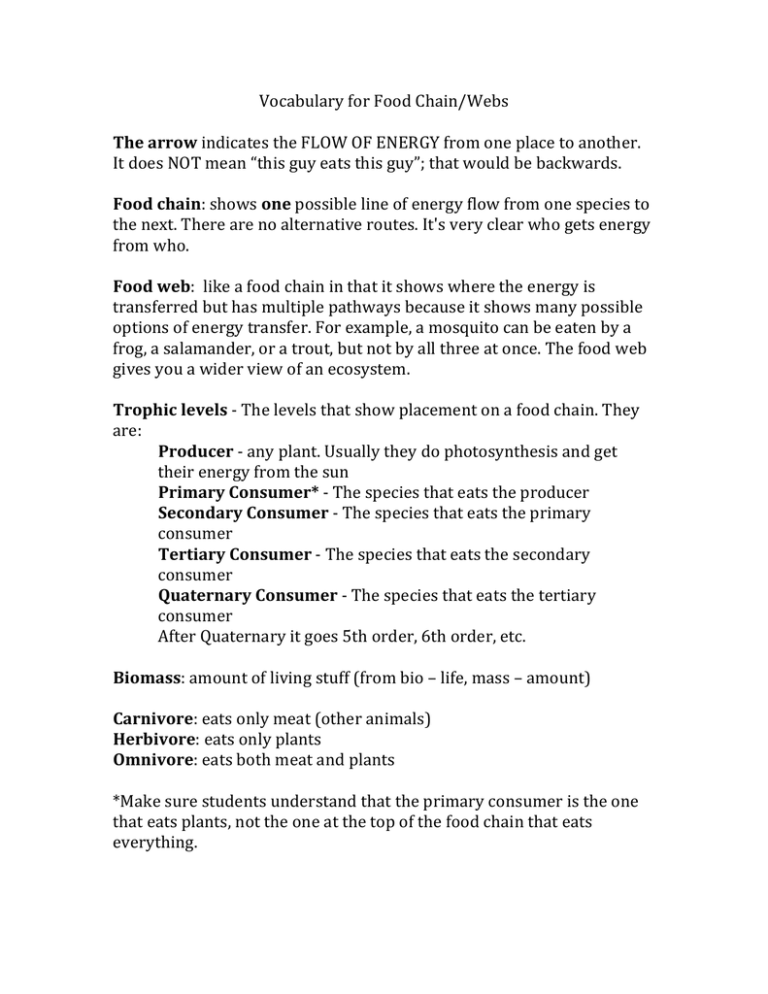
Vocabulary for Food Chain/Webs The arrow indicates the FLOW OF ENERGY from one place to another. It does NOT mean “this guy eats this guy”; that would be backwards. Food chain: shows one possible line of energy flow from one species to the next. There are no alternative routes. It's very clear who gets energy from who. Food web: like a food chain in that it shows where the energy is transferred but has multiple pathways because it shows many possible options of energy transfer. For example, a mosquito can be eaten by a frog, a salamander, or a trout, but not by all three at once. The food web gives you a wider view of an ecosystem. Trophic levels -­‐ The levels that show placement on a food chain. They are: Producer -­‐ any plant. Usually they do photosynthesis and get their energy from the sun Primary Consumer* -­‐ The species that eats the producer Secondary Consumer -­‐ The species that eats the primary consumer Tertiary Consumer -­‐ The species that eats the secondary consumer Quaternary Consumer -­‐ The species that eats the tertiary consumer After Quaternary it goes 5th order, 6th order, etc. Biomass: amount of living stuff (from bio – life, mass – amount) Carnivore: eats only meat (other animals) Herbivore: eats only plants Omnivore: eats both meat and plants *Make sure students understand that the primary consumer is the one that eats plants, not the one at the top of the food chain that eats everything. Energy pyramids (from http://eastmontscience.weebly.com/food-chains-webs-and-energy-pyramids.html) The energy pyramid shows how energy, numbers, and biomass (amount of living stuff) lessen as you go up a food chain. The grass at the bottom of this pyramid is more plentiful than any of the rest of what's above it. Grasshoppers are next, then voles, then owls. There are less and less as we go up the chain. This is because there isn't as much energy as we go up. The 10% Rule states that only 10% of the energy a species has will be passed on to the next species. The other 90% is lost as heat during running, flying, growing, and other life processes are taking place. If only 10% of the original energy from the sun is passed on, there will be less and less energy for the animals further up the food chain. In the picture it shows the grass starting with 1000 kcal (kilocalories). Only 10% is passed on to the grasshoppers. So just move the decimal place to the left once and you get 100 kcal. The voles get 10 kcal and the owl gets 1 kcal. Now, 1 kcal isn't much of anything. That's the amount of original sunlight in a snap shot of time that was passed up to the owl. He doesn't only get 1 kcal of energy from a vole. He gets more than that. We're just looking at a short period of time when the sun gave 1000 kcal to the grass (that's not much either)
